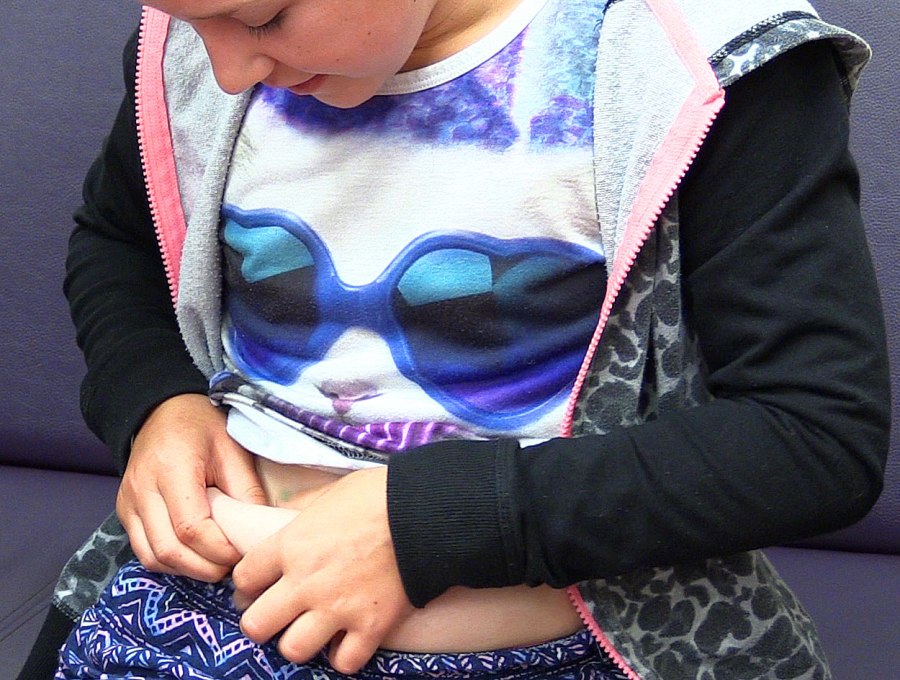5. Insulin injections
Insulin is needed to:
Replace the insulin that the Islet or Beta cells in the pancreas are not making
Balance with carbohydrate food that is being eaten
Bring blood glucose levels down when levels are high, or if you are not exercising or are unwell
Insulin types and dosing regimens: Read about the different types of insulin and insulin regimens including pump therapy. Find out more
For tamariki and rangatahi with type 1 diabetes, insulin needs to be replaced for life - this is done through daily insulin injections or an insulin pump. Rangatahi with type 2 diabetes may also need insulin injections as part of their treatment plan.
Using an insulin pen
Insulin is most commonly initially given with an insulin pen device. Most commonly used pen devices are as below (instructions for use linked):
Lantus all star pen (delivers 1u increments) https://www.mysanofiinsulin.co.uk/lantus/downloads/Lantus/allstar-pro-patient-booklet-2023.pdf
Junior all star pen (delivers 1/2u increments) https://www.mysanofiinsulin.co.uk/lantus/downloads/Lantus/juniorstar-patient-booklet-2023.pdf
You can read a transcript of this video here.
Premixed insulins are also available. Making adjustments to insulin doses when insulin has been premixed is very difficult. For this reason premixed insulin either via pen device or syringe is used less frequently in children with diabetes during growing years where frequent adjustment of insulin is required.
How often to change the needle
Insulin pen device needles need to be changed after 3-4 injections - so for short acting insulin, change needle at end of each day and for long acting insulin like lantus, twice a week.
Injecting technique
In children, the skin needs to be pinched upwards to isolate the layer of fat under the skin. A 45 degree angle needs to be used when giving the injection into the layer of fat. Most children do not have much fat when they are diagnosed with diabetes so the safest area to use at this time is the top outside area of their buttocks by their hips. Children with more fat or young people learning to inject themselves can also use the area either side of their tummy button right the way over to their hips.

It is important that injections are given in a different place each time to prevent the development of lumps called Lipohypertrophy which can affect the absorption of the insulin and affect blood sugar levels.
Giving the first injection
Most families find giving an injection for the first time very difficult however over time with a lot of support from your diabetes team, this does get easier.
You can read a transcript of this video here.
Giving an injection to a toddler
You can read a transcript of this video here.
Insulin doses
We recommend that all whānau of tamariki and rangatahi with diabetes keep accurate records of blood glucose levels and the amount of insulin given each day.
If you're using a Continuous Glucose Monitoring system (CGMS), the data will usually upload automatically to an online platform if it's linked to a phone, or it can be manually uploaded using a computer and cord if you're using a reader.
Even with these online platforms, it’s still a good idea to use a logbook—particularly in the early days. It helps you get used to the routine, and it’s a useful tool for sharing information between home, school, and anyone else involved in your child’s care.
In the weeks following diagnosis, we ask whānau to stay in daily contact with the diabetes team to share these levels. This allows us to help safely adjust insulin doses. Over time, you’ll build the skills and confidence to manage these adjustments yourselves, with continued support from the diabetes team as needed.
Diabetes diary
The Clinical Network for Children and Young People with Diabetes has developed a Diabetes Diary to help whānau record glucose levels for your tamaiti or rangatahi. You can fill in personal details, and it also includes guidance on managing hypos and what to do on sick days.
To make it into a booklet, print double-sided on the ‘short edge’. You can also ask your diabetes team for a copy.
https://www.kidshealth.org.nz/sites/default/files/pdfs/NZCYCN%20Diabetes%20Diary%20-%202023.pdf
As tamariki and rangatahi grow, their insulin doses will need to increase. For older tamariki who are self-injecting, it is important that injections are closely supervised - regardless of age. This means sitting with them and watching as they draw up the insulin and inject it into the layer of fat under the skin.
Tamariki and rangatahi with diabetes need to see the diabetes team every 4 months so their treatment can be reviewed and adjusted as needed.
You can read a transcript of this video here
Disposal of needles
Syringes and pen needles must be disposed of in approved sharp disposal containers. These are available through Diabetes Auckland or your local pharmacy for a small fee. Once the sharps container is full, it must be sealed with the approved lid and returned to the place of purchase for disposal.
You can read a transcript of this video here
Let's go over the main points. Think you've got it sorted? Read through our one page summary here.
Think you've got it sorted now?
If you and your parent/carer have read through the information above and watched the videos, and you feel confident that you can do this yourselves, print off and fill in the evaluation form below (you might need to ask someone to print this off for you) and return to the nurse on your ward. If you have any questions, note them down on this form and your diabetes nurse specialist will discuss them with you.
Insulin injections: Evaluation
After reading this teaching module and watching the videos, I feel confident in:
| Yes | No | n/a | |
| Dialing up an insulin dose using an insulin pen | |||
| My child (over 10 years old) dialing up and giving their own insulin using an insulin pen under my supervision | |||
| Changing an insulin cartridge in an insulin pen | |||
| My child (over 10 years old) changing the cartridge on their insulin pen | |||
| Understanding why I need to rotate injection sites to prevent lipohypertrophy | |||
| Documenting my child’s insulin amounts into the diabetes log book provided by the diabetes team | |||
| Disposing of needles in an approved sharps container |
Comments:
Date:
Name:
